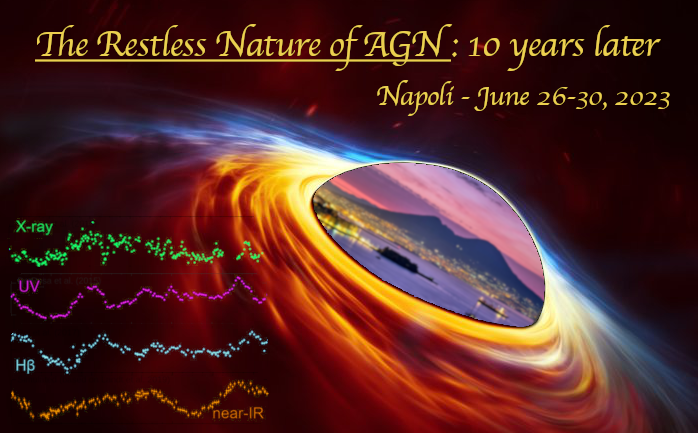Speaker
Description
AGN variability on minutes to hour-like timescales in the optical waveband is termed as intra-night optical variability (INOV). Such variations are used as an alternative tool to indirectly verify the presence of jets in AGNs. Here, we report the first attempt to systematically characterize INOV for a sample of radio-quiet narrow-line Seyfert1 galaxies (RQ-NLSy1s) that had shown multiple flaring at 37 GHz in the radio observations of the Metsahovi radio telescope but no jet counterparts in the recent radio observations of Karl G. Jansky Very Large Array (JVLA) at 1.6, 5.2, and 9.0 GHz. Thus, It is unclear if these NLSy1s possess relativistic jets that cause flaring at 37 GHz. A total of 28 intra-night sessions, each lasting >3 h was conducted for the INOV study of this sample. In our analysis, special care has been taken to address the possible effect on the differential light curves, of any variation in the seeing disc during the session, since that might lead to spurious claims of INOV from such AGN due to the possibility of a significant contribution from the host galaxy to the total optical emission. From our observations, a duty cycle (DC) of INOV detection in the RQ-NLSy1s is estimated to be around 30 percent, which is comparable to that known for blazars. This suggests that a few of the sources from this sample possess relativistic jets even though being radio-quiet. We also briefly discuss the possible mechanisms for the non-detection of relativistic jets in their JVLA observations.

